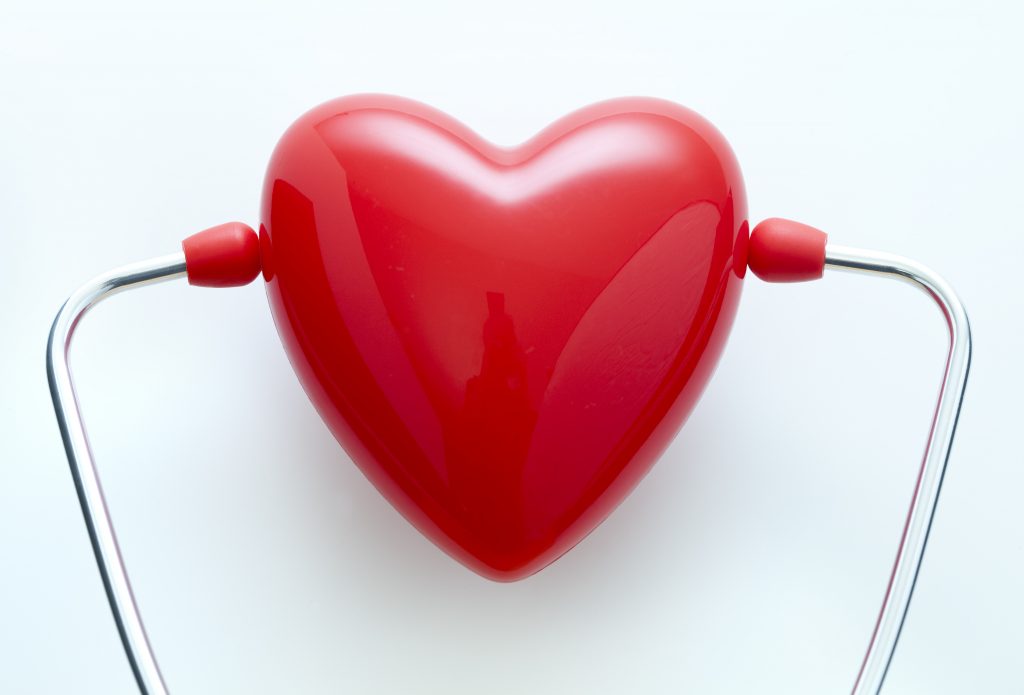What Is Heart Disease?
What Is Heart Disease?
Heart disease can refer to several different conditions affecting the structure or function of the heart and/or its blood vessels. The most common type of heart disease affecting people in the United States is coronary artery disease, also known as coronary heart disease. In this condition, arteries in the heart become narrowed or blocked, which reduces blood flow and can ultimately lead to a heart attack. Other types of heart disease include:
· Atherosclerosis, in which plaque builds up in the arteries, causing the walls of the blood vessel to thicken and reduce blood flow (which can lead to coronary artery disease)
· Vascular disease, which affects the blood vessels of the heart and those leading to and away from the heart
· Arrhythmias, which are abnormalities in the heart’s rhythm
· Congenital heart defects (present at birth)
· Cardiomyopathy (which can be inherited), which can cause thickening or weakening of the heart muscle
· Infections or diseases that affect the heart muscle caused by bacteria, viruses, or parasites
Heart disease can lead to serious complications, including heart failure, which means your heart cannot pump enough blood to meet your body’s needs. It can also lead to heart attack, when a blood clot blocks blood flow leading to the heart, cutting off oxygen to the muscle and causing parts of it to die.
Heart disease can also cause stroke (narrowing or blockage of the arteries leading to the brain); aneurysm (bulging and/or possibly burst artery); peripheral artery disease (which reduces blood flow to the legs and other extremities); and sudden cardiac arrest, a failure of the heart’s electrical system that stops the blood flow the body needs to function and can lead to death.
WHAT CAUSES HEART DISEASE?
The causes of heart disease are dependent on the type of condition.
- Atherosclerosis (plaque buildup) is the most common cause of coronary artery disease. This condition often develops due to high blood pressure, high cholesterol, high triglycerides, smoking, obesity, insulin resistance or diabetes, or inflammation from unknown causes or as a result of a disease like lupus. Unhealthy behaviors or lifestyle choices—like smoking, poor diet, and a sedentary lifestyle—can lead to the development of atherosclerosis.
- Heart arrhythmias can be caused by heart defects or valvular heart disease, but they can also develop as a result of coronary artery disease, diabetes, high blood pressure, smoking, drug abuse, excessive alcohol or caffeine consumption, some medications (prescription, over-the-counter medications, supplements), stress, or even an electrical shock.
- Congenital heart defects typically develop before a baby is born, and can be caused by genes, medical conditions, and sometimes medications taken by the mother. Some defects can develop as a person grows and their heart structure changes.
- Cardiomyopathy can be caused by damage from a heart attack, infection, toxic exposure, drug use, protein buildup, or connective tissue disorders. Certain forms can be inherited. It can also develop as a result of high blood pressure or aging.
- Heart infections can be caused by bacteria, viruses, or parasites.
- Valvular heart disease can occur as a result of infections, including rheumatic disease and endocarditis, connective tissue disorders, or congenital malformations.
RISK FACTORS FOR HEART DISEASE
Some risk factors for heart disease are unavoidable, like the presence of congenital heart defects, family history, gender—men and postmenopausal women are at increased risk—or normal aging. But many risk factors are related to lifestyle choices and behaviors that you can modify.
These include:
- Smoking
- High cholesterol
- High blood pressure
- Diabetes
- Obesity
- Physical inactivity/ sedentary lifestyle
- Stress
- Dental health problems (which can lead to infections of the heart)
You have the power to change many of these risk factors. Quitting smoking, eating a healthier diet, getting regular exercise, finding ways to manage stress, and getting regular medical and dental checkups can go a long way in maintaining and improving heart health.
WHAT ARE THE SYMPTOMS OF HEART DISEASE?
Many people with heart disease do not have obvious symptoms. If you are at a high risk of heart disease but don’t have any symptoms, your doctor may recommend testing.
For those who do experience symptoms, they vary based on the type of heart disease.
People with coronary artery disease may experience:
- Chest pain or a feeling of pressure/squeezing in the chest
- Shortness of breath
- Nausea
- Unexplained indigestion or gas
Those with arrhythmias may experience:
- A fluttering heart or racing heartbeat
- A slow pulse
- Dizziness, lightheadedness, or fainting
- Chest pain
People with atherosclerosis may experience:
- Chest pain
- Shortness of breath
- Coldness, numbness, weakness, and/or pain in the limbs and extremities
Many congenital heart defects are diagnosed before or shortly after birth. When they are undiagnosed, symptoms may include:
- Irregular heart rhythm or heart murmur
- Fatigue or low energy
- Shortness of breath or breathing difficulties
- Blue-tinged skin
- Swelling of the extremities
Cardiomyopathy may cause the following symptoms:
- A pounding or rapid pulse
- Shortness of breath
- Fatigue
- Swollen legs, ankles, and/or feet
- Bloating
Heart infections may present with:
- Chest pain
- Chest congestion or coughing
- Fever and chills
- Skin rash
Women often experience different symptoms of heart disease than men, especially if they have coronary artery disease. Their symptoms may be easily confused with other conditions and may be longer-lasting. Commonly reported heart disease symptoms in women are:
- Dizziness, lightheadedness, and/or fainting
- Pale skin
- Shortness of breath or shallow breathing
- Anxiety
- Nausea and/or vomiting
- Jaw, neck, and/or back pain
- Cold sweats
- Indigestion or gas-like pain in the chest and stomach
Of course, many of these symptoms can also be caused by other (and often far less serious) conditions. If you experience new or long-lasting symptoms, especially if you have risk factors for heart disease, you should talk to your doctor.
If you experience any of the following symptoms—and they are severe, last 30 minutes are longer, or are not relieved by rest or oral medication—seek immediate medical care. They could be signs of a heart attack:
- Pressure, heaviness, discomfort, or pain in the chest, arm, or below the sternum
- Pain or discomfort that radiates to your arm, back, jaw, or throat
- Rapid or irregular heartbeats
- Sweating
- Nausea and/or vomiting
- Dizziness
- Serious weakness, anxiety, or shortness of breath
- Indigestion or a choking feeling

HOW IS HEART DISEASE DIAGNOSED?
How would you know if you have heart disease? Certain risk factors increase your chances. Those include family history, high cholesterol, high blood pressure, diabetes, gum disease, smoking, or preeclampsia (during pregnancy). Or you may experience symptoms as described earlier. In either case, you should see your primary care doctor, who will often refer you to a cardiologist. A cardiologist can make the correct diagnosis and help you prevent or manage heart disease through screenings and checkups, lifestyle recommendations, medications, and treatment procedures, when necessary.
If, after a thorough physical exam and medical history, your cardiologist suspects heart disease, he or she will order diagnostic tests to determine if you have heart disease.
These include:
- Blood tests
- Electrocardiogram (ECG or EKG), which records electrical signals in your heart
- Echocardiogram, which uses ultrasound to show your heart’s structure and show how it beats and pumps blood
- Holter monitor, a portable device that continuously records your heart rhythm to check for arrhythmia
- Stress test, which checks your heart’s response to exercise or medicine
- Cardiac CT scan, which takes X-ray images of your heart and chest
- Cardiac MRI, which uses a magnetic field and computer-generated radio waves to produce detailed heart images
- Cardiac catheterization, which measures pressure and blood flow using a short tube inserted into a vein or artery in your groin or arm and guided into the heart that allows the doctor to inject dye that shows up on X-ray images
WHAT ARE COMMON TREATMENTS FOR HEART DISEASE?
Your treatment will depend on the type of heart disease, its severity, and your overall health. Treatments fall into three general categories.
- Lifestyle changes—Eating a balanced, low-fat, low-sodium, reduced sugar diet; incorporating regular exercise into your life (at an intensity approved by your physician); losing weight; limiting alcohol; quitting smoking; and taking control of risk factors like diabetes, high cholesterol, or high blood pressure can all go a long way in managing heart disease.
- Medications—If you need medication, the type you will be prescribed depends on the type of heart disease you have. They include:
- Anticoagulants (blood thinners)
- Antiplatelet or dual antiplatelet therapy to prevent clotting
- Angiotensin-converting enzyme (ACE) inhibitors, which expand blood vessels/decrease resistance
- Angiotensin II receptor blockers or inhibitors (ARBs), which prevent the chemical angiotensin from affecting the heart and blood vessels, preventing a rise in blood pressure
- Angiotensin receptor-neprilysin inhibitors (ARNIs), which improve artery opening and blood flow, reduces sodium retention, and reduce strain on the heart
- Beta blockers, which reduce heart rate and force of contraction, lowering blood pressure and making the heart beat more slowly and less forcefully
- Combined alpha and beta-blockers to treat high blood pressure and heart failure
- Calcium channel blockers, which disrupt the movement of calcium into the cells of the heart and blood vessels, relaxing blood vessels and reducing the heart’s pumping strength
- Cholesterol-lowering medications
- Digitalis preparations, which increase the force of heart contractions to treat heart failure and some arrhythmias
- Diuretics to reduce sodium and fluid retention through urination
- Vasodilators to relax blood vessels and reduce blood pressure
- Medical procedures and surgeries—If your heart disease cannot be controlled with lifestyle changes and medication, your doctor may recommend specific treatment procedures. These will depend on your type and severity of heart disease and may include:
- Coronary angioplasty and stenting—A catheter with a small balloon at the tip is inserted in an artery in the groin, arm, or wrist, up to the blocked area. The balloon is inflated to widen the artery. Often, a stent (an expandable metal tube) is then placed to keep the artery open.
- Catheter ablation—Using a catheter, a heart specialist uses radiofrequency energy or freezing to eliminate of problem areas causing abnormal heart rhythms.
- Coronary artery bypass graft surgery (CABG)—During this surgical procedure, a blood vessel is taken from the chest, leg, or arm and attached to the coronary artery to let blood bypass a narrowed or blocked artery.
- Artificial pacemaker implantation—In this procedure, a small device is inserted under the skin of your chest, and wires connect the pacemaker to the chambers of your heart. The pacemaker releases small electrical currents that stimulate the heart muscle to help it pump regularly.
- Implantable cardiac defibrillator (ICD)—A small device is implanted in the chest and connected to the heart by one or more wires. This device monitors and corrects irregularities in the heart rhythm.
- Heart valve repair or replacement—This procedure repairs or repairs faulty heart valves to help your heart pump blood efficiently. Many surgical approaches can be used to repair or replace heart valves, including open-heart surgery or minimally invasive heart surgery.
- Ventricular assist device (VAD)—This mechanical device is implanted to help one or both of the heart’s pumping chambers (ventricles). It may be used for heart failure no longer responding to medication and other treatments and can help someone’s heart work when they are waiting for a heart transplant.
Is a loved one struggling to manage heart medications or need in-home personal care after a heart procedure? Our team at Open Systems Healthcare can help. Learn more about our personal care services and find an office near you.
